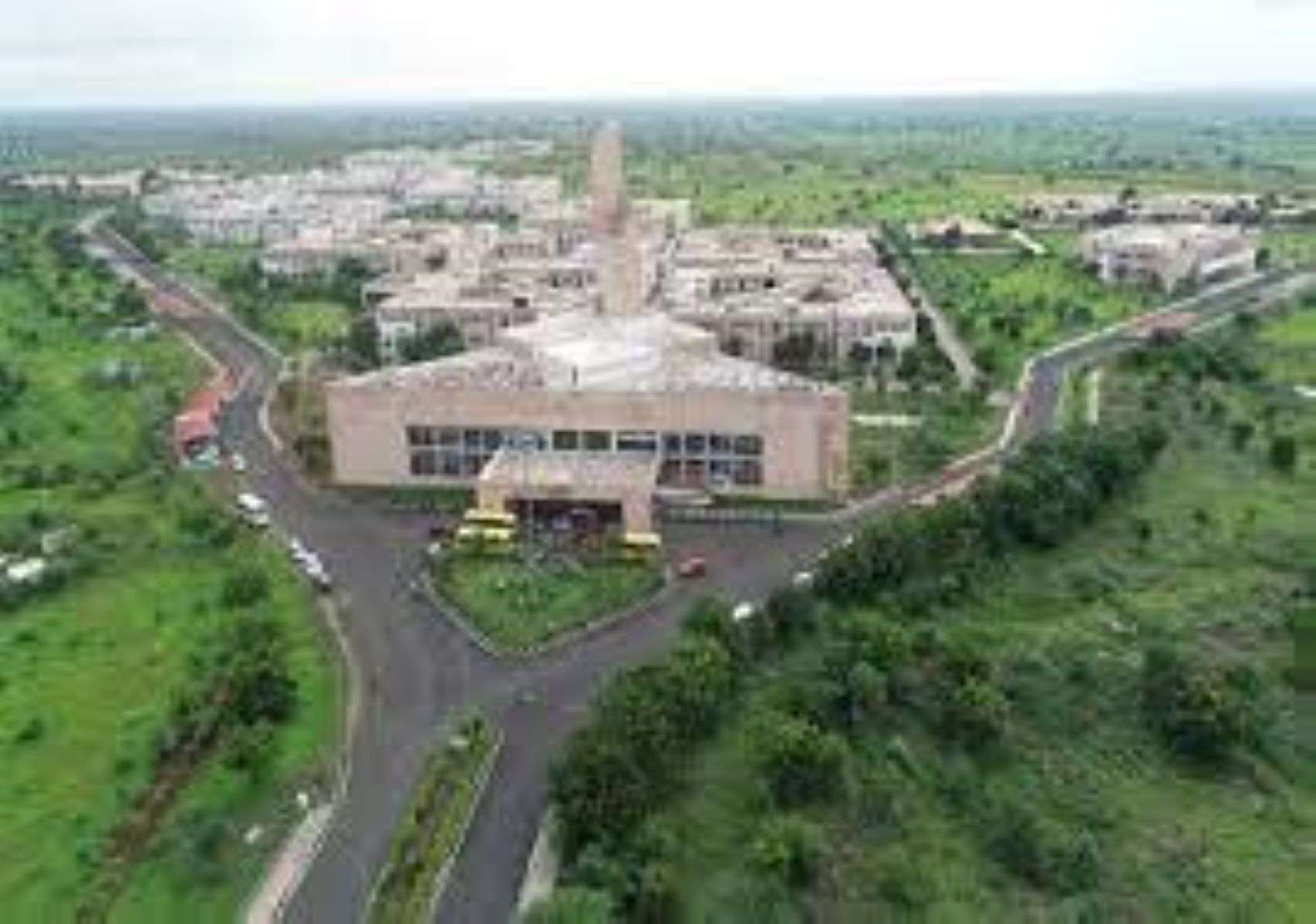About 273 million Indians moved out of multidimensional poverty between 2005-06 and 2015-16, according to a UN report, which noted that India has recorded the largest reduction in the number of people living in this category.
Released Thursday, the study titled ‘Charting pathways out of multidimensional poverty: Achieving the SDGs’ was based on a global multidimensional poverty index (MPI) which measures the complexities of poor people’s lives, individually and collectively, each year. The MPI was observed in 75 countries from the East, Central and South Asia, Europe, Latin America and the Caribbean, Sub-Saharan Africa as well as the Pacific. The report was meant to provide a comprehensive picture of global trends in multidimensional poverty covering five billion people.
- The data, released by the United Nations Development Programme (UNDP) and the Oxford Poverty and Human Development Initiative (OPHI), shows that 65 out of 75 countries studied significantly reduced their multidimensional poverty levels between 2000 and 2019.
- Of these 65 countries that reduced their Multidimensional Poverty Index (MPI) value, 50 also reduced the number of people living in poverty.
- The report said that four countries—Armenia (2010-2015/2016), India (2005/2006-2015/2016), Nicaragua (2001-2011/2012) and North Macedonia (2005/2006-2011) halved their global MPIT value and did so in 5.5-10.5 years.
- These countries show what is possible for countries with very different initial poverty levels. They account for roughly a fifth of the world’s population, mostly because of India’s large population, the report said.
- As four countries halved their poverty, one of them India (2005/2006-2015/2016) did so nationally and among children and had the biggest reduction in the number of multidimensionality poor people (273 million).
- The report noted that India saw the most people moving out of multidimensional poverty some 270 million people between 2005/06 and 2015/16.
- In a footnote related to the number of 273 million people moving out of poverty, the report said that the number of people living in multidimensional poverty in India is based on population data from United Nations Department of Economic and Social Affairs (UNDESA) (2019), which imply a larger number of multidimensional poor people in 2006; previous estimates were based on UNDESA (2017).
- The report additionally notes that India and Nicaragua’s time periods cover 10 and 10.5 years respectively, and during that time both countries halved their MPIT values among children. So decisive change for children is possible but requires conscious policy efforts, it said.
- Fourteen countries reduced multidimensional poverty in all their sub national regions: Bangladesh, Bolivia, the Kingdom of Eswatini, Gabon, Gambia, Guyana, India, Liberia, Mali, Mozambique, Niger, Nicaragua, Nepal and Rwanda.
- The report stressed that while the new figures released show that before the COVID-19 pandemic hit, progress was being made in tackling multidimensional poverty that progress is at risk. COVID-19 is having a profound impact on the development landscape.
- But this data – from before the pandemic – is a message of hope. Past success stories on how to tackle the many ways people experience poverty in their daily lives, can show how to build back better and improve the lives of millions, Director of OPHI at the University of Oxford Sabina Alkire said.
- While data is not yet available to measure the rise of global multidimensional poverty after the pandemic, simulations for 70 countries in the developing world, based on the anticipated impacts of the virus on just two components of the global MPI nutrition and school attendance suggests how much impact the crisis could have unless it is addressed.
- In three scenarios of varying deterioration in which 10, 25 and 50 per cent of people who are multidimensionally poor or vulnerable become undernourished, and half of primary school-aged children no longer attend school, poverty levels could be set back 8 to 10 years.
- “But even if we look only at the impact on nutrition, if anticipated increases in undernutrition are not prevented or swiftly reversed, the setback could range between 36 years,” it said.
- The data shows that across 107 developing countries, 1.3 billion people, or 22 per cent, live in multidimensional poverty. The data also reveals that the burden of multidimensional poverty disproportionately falls on children. Half of the 1.3 billion poor (644 million) have not yet turned 18, while 107 million are 60 or older, a particularly important figure during the COVID-19 pandemic. About 84.3 per cent of multidimensionally poor people live in sub-Saharan Africa. The report also said that 10 countries account for 60 per cent of unvaccinated children, and 40 per cent of children unvaccinated for DTP3 live in just four countries: Nigeria, India, Pakistan and Indonesia.
- Approximately 273 million people moved out of multidimensional poverty in India, the study noted. It also states that three South Asian nations — India, Bangladesh and Nepal — were among the 16 fastest countries to reduce their MPI value.
“India remains the country that has the largest reduction in number of poor, with over 270 million persons leaving poverty 2005-6 to 2015-16.” The study also addresses the coronavirus pandemic, stating how the global crisis had unfolded in the middle of the analysis. While the study could not gauge the rise of worldwide poverty after the pandemic, it has predicted that if left unaddressed the Covid crisis could set back global progress across 70 developing countries by 3-10 years.
OPHI director Sabina Alkire, who led the development of the multidimensional poverty index (MPI) in 2010, said,
Calculating multidimensional poverty
- Multidimensional poverty encompasses the various deprivations experienced by poor people in their daily lives such as poor health, lack of education, inadequate living standards, poor quality of work, the threat of violence, and living in areas that are environmentally hazardous, among others.
- MPIT is the Multidimensional Poverty Index estimate that is based on harmonized indicator definitions for strict comparability over time.
- The MPI is calculated based on these indicators — deprivation of nutrition, schooling, cooking fuel, sanitation, drinking water, housing and assets.
- According to the study, it is the poor and disadvantaged people who suffer the most from climate change and environmental degradation, which is why they carry a “double burden”.
- They are the most vulnerable to environmental degradation, air pollution, lack of clean water, and unhealthy sanitation conditions and also the ones who don’t get sufficient nutrition or proper housing.
- The 75 nations in the study were given an intensity of deprivation percentage based on their MPI values. According to the study, 55.1 per cent of the population in India lived under multidimensional poverty in 2005-06.
- In 2015-16, it came down to 27.9 per cent. As of 2015-16, the intensity of deprivation was 43.9 per cent, while the population under severe multidimensional poverty was 8.8 per cent.
- According to the study, 37.7 crore people in India lived under multidimensional poverty as of 2018.
- As of 2016, the percentage of people in India who were deprived of nutrition was 21.2 per cent.
- People who were deprived of cooking fuel was 26.2 per cent.
- Those deprived of sanitation and drinking water were 24.6 per cent and 6.2 per cent respectively.
- Deprivation of electricity and housing figures stood at 8.6 per cent and 23.6 per cent for the year.
- The study also highlights the correlation between multidimensional poverty and immunisation.
- The percentage of children receiving three doses of diphtheria, tetanus and pertussis (DTP3) vaccines had been used as an indicator of how well countries were providing routine immunisation.
- According to the study, 10 countries accounted for 60 per cent unvaccinated children.
- Around 40 per cent of the children who were not vaccinated for DTP3 lived in four countries — India, Nigeria, Pakistan and Indonesia.
- The report also stated that populated developing countries could contribute considerably to a large number of unvaccinated children despite achieving high immunisation coverage.
- The study cited India as an example where 2.6 million children were “undervaccinated”.
- New figures released today show that before the COVID-19 pandemic hit, progress was being made in tackling multidimensional poverty, according to the global Multidimensional Poverty Index (MPI), a measure that looks beyond income to include access to safe water, education, electricity, food and six other indicators.
- Now that progress is at risk. The data, released by the United Nations Development Programme (UNDP) and the Oxford Poverty and Human Development Initiative (OPHI), shows that 65 out of 75 countries studied significantly reduced their multidimensional poverty levels between 2000 and 2019.
- Sierra Leone made the fastest progress in reducing their global MPI value. It is one of seven Sub-Saharan African countries in the top ten fastest-moving countries, alongside Côte D’Ivoire, Guinea, Liberia, Mauritania, Rwanda and Sao Tome and Principe.
- India saw the most people moving out of multidimensional poverty – some 270 million people between 2005/6 and 2015/16. 70 million people in China left multidimensional poverty between 2010 and 2014. In Bangladesh, numbers declined by 19 million between 2014 and 2019.
Addressing Multidimensional Poverty in a post-COVID-19 world
- While data is not yet available to measure the rise of global multidimensional poverty after the pandemic, simulations for 70 countries in the developing world, based on the anticipated impacts of the virus on just two components of the global MPI – nutrition and school attendance – suggests how much impact the crisis could have unless it is addressed.
- In three scenarios of varying deterioration in which 10, 25 and 50 percent of people who are multidimensionally poor or vulnerable become undernourished, and half of primary school-aged children no longer attend school, poverty levels could be set back 8 to 10 years.
- But even if we look only at the impact on nutrition, if anticipated increases in undernutrition are not prevented or swiftly reversed, the setback could range between 3–6 years.
- Among the 1.3 billion people still living in multidimensional poverty today, more than 80 percent are deprived in at least five of the ten indicators used to measure health, education and living standards in the global MPI.
- The data also reveals that the burden of multidimensional poverty disproportionately falls on children. Half of the 1.3 billion poor have not yet turned 18. While 107 million are 60 or older.
- For instance, in Sub-Saharan Africa, 55 percent of the population (558 million people) is multidimensionally poor. Of these, 98 percent (547 million people) do not have access to clean cooking fuel, 84 percent (470 million people) lack access to electricity and 66 percent (366 million people) do not have access to clean drinking water.











More Stories
Registration for CLAT 2025 begins today; last date October 15
CLAT 2025 registration will begin on July 15
Delhi University 5 Year Law Programs Registration Begins